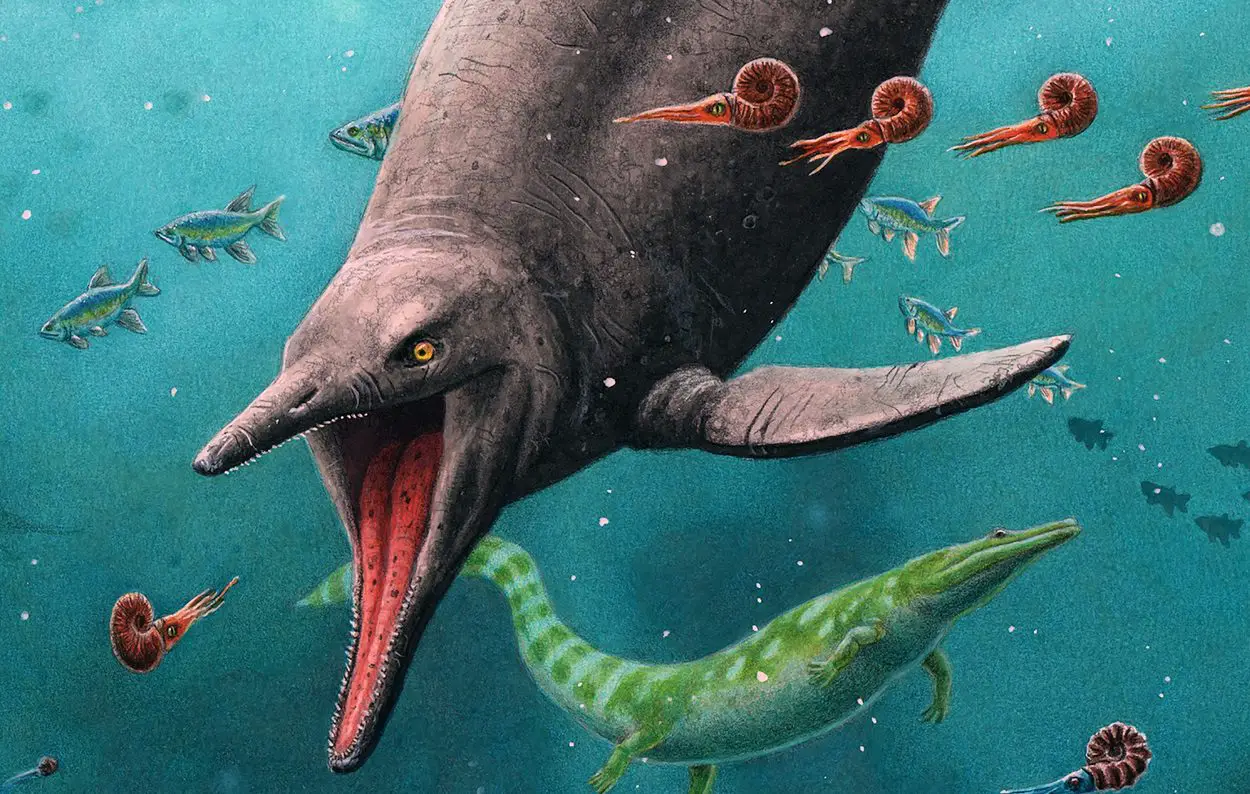Palaeontologists have found the remains of an Ichthyosaur on the island of Spitsbergen, located in the Svalbard archipelago in northern Norway.
Ichthyosaurs are large extinct marine reptiles that thrived during much of the Mesozoic era. They first appeared around 250 million years ago (Ma), with one species of the order known as Ichthyosauria, surviving until around 90 million years ago into the Late Cretaceous.
During the Early Triassic epoch, it was believed that ichthyosaurs and other ichthyosauromorphs evolved from a group of unidentified land reptiles that returned to the sea. Over time, these early amphibious reptiles became more efficient at swimming and eventually modified their limbs into flippers. They developed a ‘fish-like’ body shape and started giving birth to live young; thus, severing their final tie with the land.
On the southern shores in the Ice Fjord in western Spitsbergen, an expedition in 2014 collected a large number of concretions which were transported to the Natural History Museum at the University of Oslo for further study. The concretions were formed by limey sediments that settled around decomposing animal remains on the ancient seabed.
A study of the concretions found bony fish and bizarre ‘crocodile-like’ amphibian bones, together with 11 articulated tail vertebrae from an ichthyosaur in concretion deposits supposedly too old for ichthyosaurs to have existed.
Also, rather than representing the textbook example of an amphibious ichthyosaur ancestor, the vertebrae are identical to those of geologically much younger larger-bodied ichthyosaurs, and even preserve internal bone microstructure showing adaptive hallmarks of fast growth, elevated metabolism and a fully oceanic lifestyle.
Geochemical testing of the surrounding rock confirmed the age of the fossils at approximately two million years after the end-Permian mass extinction. Given the estimated timescale of oceanic reptile evolution, this pushes back the origin and early diversification of ichthyosaurs to before the beginning of the Age of Dinosaurs; thereby forcing a revision of the textbook interpretation and revealing that ichthyosaurs probably first radiated into marine environments prior to the extinction event.
Excitingly, the discovery of the oldest ichthyosaur rewrites the popular vision of Age of Dinosaurs as the emergence timeframe of major reptile lineages. It now seems that at least some groups predated this landmark interval, with fossils of their most ancient ancestors still awaiting discovery in even older rocks on Spitsbergen and elsewhere in the world.
Header Image Credit : Esther van Hulsen





